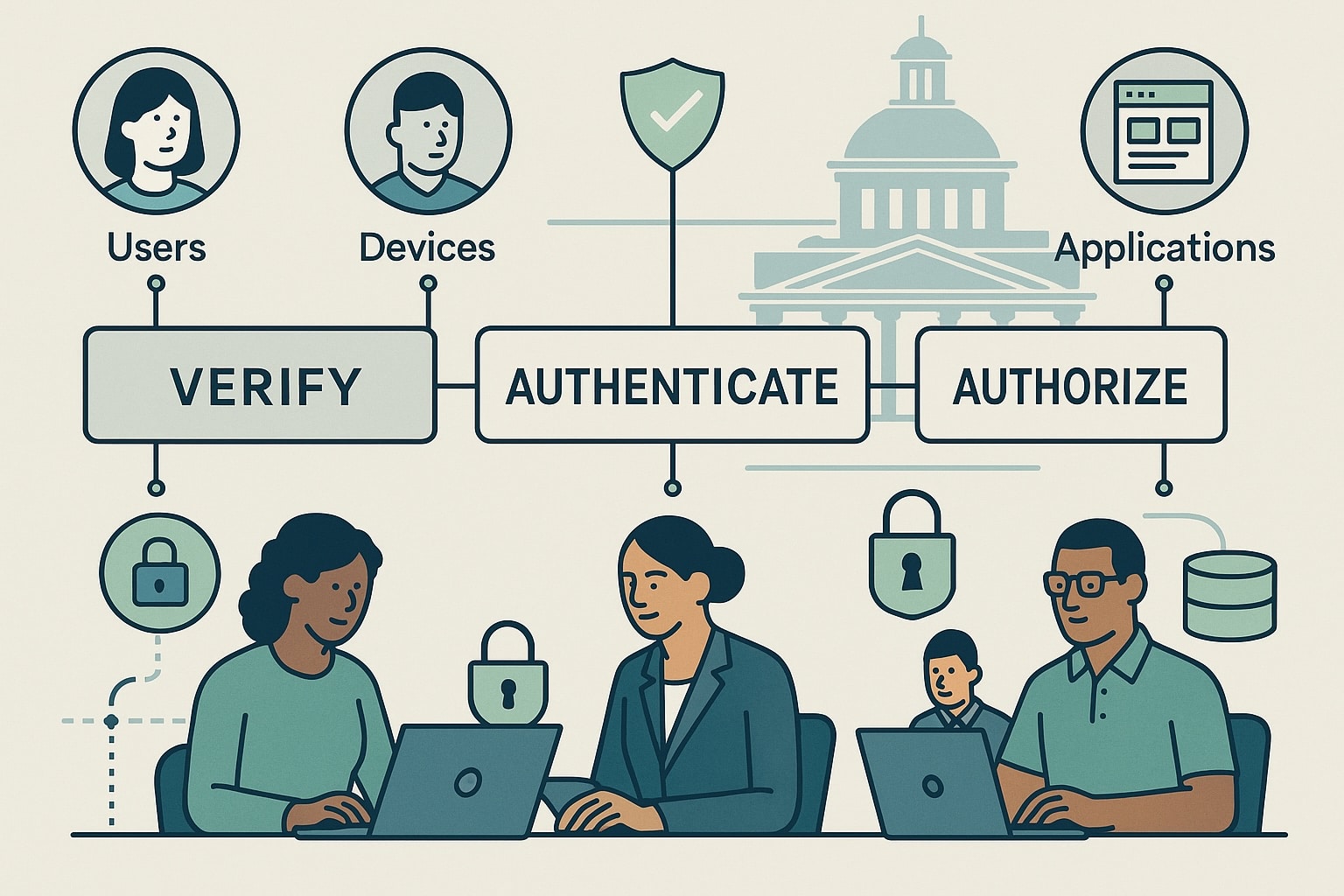
Zero Trust for SLED: A Tactical Guide to Getting Started
The traditional “secure the perimeter” model no longer works—especially for SLED organizations balancing hybrid workforces, legacy systems, and cloud adoption. Zero Trust shifts the mindset: never trust, always verify. For SLED leaders, the challenge is moving from concept to implementation without overwhelming already-stretched teams. Start…
August 8, 2025
The traditional “secure the perimeter” model no longer works—especially for SLED organizations balancing hybrid workforces, legacy systems, and cloud adoption. Zero Trust shifts the mindset: never trust, always verify.
For SLED leaders, the challenge is moving from concept to implementation without overwhelming already-stretched teams. Start with these tactical steps:
-
Inventory Users, Devices, and Applications
You can’t secure what you don’t know exists. Create a living asset map that tracks every user account, endpoint, and critical application.
-
Enforce Strong Identity Controls
Multi-factor authentication (MFA) is table stakes. Pair it with role-based access to ensure staff only access what they truly need.
-
Segment Networks and Data
Use micro-segmentation to isolate sensitive systems like student records, voter databases, or court systems. Compromise in one area shouldn’t give access to all.
-
Adopt Continuous Verification
Monitor behavior in real-time—unusual logins, abnormal data access—and trigger automatic re-authentication or alerts.
-
Start Small, Scale Fast
Pick a high-value, high-risk system as your Zero Trust pilot. Learn, refine, and expand across departments.
Zero Trust isn’t a single product—it’s a security posture. With a phased approach, SLED organizations can harden defenses without grinding operations to a halt.
More Insight
Get updates on the digital frontier.


